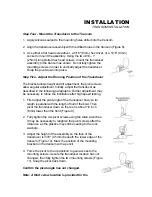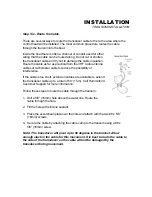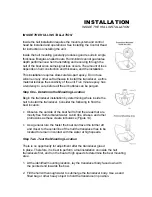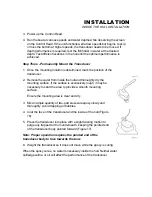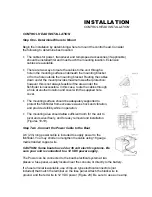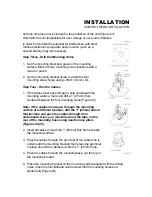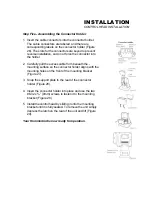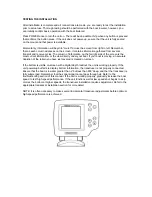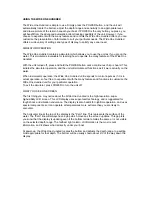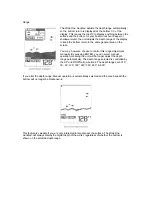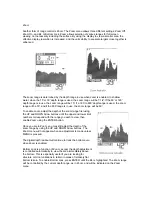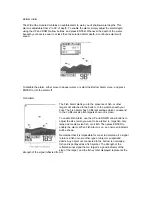
USING THE WIDE ONE HUNDRED
The Wide One Hundred is simple to use. Simply press the POWER button, and the unit will
automatically locate the bottom, adjust the depth range and sensitivity to an appropriate level,
and draw a picture of the terrain beneath your boat. If POWER is the only button you press, you
will benefit from the advanced automatic bottom tracking capability of the unit. However, if you
choose to experiment with the many features and controls the Wide One Hundred offers, you can
customize the presentation of information to suit your particular needs. The Wide One Hundred
offers a wide variety of settings and types of display, to satisfy any sonar need.
SIMULATOR OPERATION
The Wide One Hundred contains a simulator which allows you to use the unit as if you are on the
water. This simulator is invaluable for learning how to operate the many features of the Wide One
Hundred.
With the unit turned off, press and hold the POWER button until a continuous chirp is heard. This
initiates the simulator operation, and the unit will simulate all functions as if it were actually on the
water.
When in simulator operation, the Wide One Hundred unit responds to control inputs as if it is in
actual operation, so feel free to experiment with the many features and functions to customize the
Wide One Hundred unit for your particular operation.
To exit the simulator, press POWER to turn the unit off.
WHAT YOU SEE ON-SCREEN
The first thing you may notice about the Wide One Hundred is the high-resolution, super
highvisibility LCD screen. This LCD display uses super-twist technology, and is ruggedized for
tough shock and vibration endurance. The display is also backlit for nighttime operation, and uses
special components so it can operate at temperatures more extreme than you are likely to
encounter.
The horizontal line at the top of the display is the "Zero" line. This represents the surface of the
water. The "Zero" line will always have a gap which moves as the screen updates. This gap lets
you know that the display is updating even if the bottom terrain remains the same or is not visible
on the selected depth range. The farthest right column of information is the most recent
information, and it shows what is directly under your boat.
At power-up, the Wide One Hundred locates the bottom and adjusts the depth range to a setting
most appropriate for that depth. The bottom will be usually shown about 2/3 of the way down the
display.


